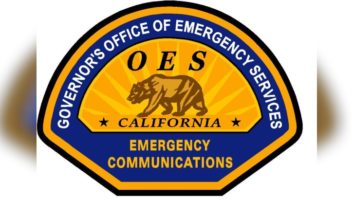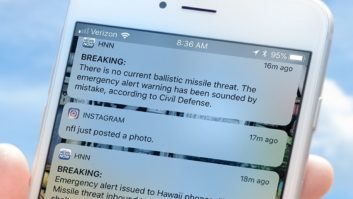 The FCC in January reminded U.S. broadcasters and other EAS participants of their obligations to comply with the Emergency Alert System rules.
The FCC in January reminded U.S. broadcasters and other EAS participants of their obligations to comply with the Emergency Alert System rules.
“In reporting on the most recent national level test of the EAS, the FCC’s Public Safety and Homeland Security Bureau noted improvements in key areas, but identified several issues that impair dissemination of EAS messages,” the Enforcement Bureau stated in a five-page advisory.
“The 2019 Nationwide EAS Test Report noted, for instance, that EAS participants must ensure that messages comply with the FCC’s requirements designed to make the message accessible to individuals with hearing and vision disabilities.”
After briefly summarizing how the system works, the FCC provided the following information:
What steps can EAS participants take to improve their participation in EAS and ensure compliance with the FCC’s rules?
The EAS rules are in sections 11.1 through 11.61 of the commission’s rules. Key requirements include:
EAS participants must ensure that their EAS equipment’s monitoring and transmitting functions are available whenever the stations and systems are operating. An EAS participant’s failure to receive or transmit an EAS message during a national test or actual emergency because of an equipment failure may subject the EAS Participant to enforcement.
- To ensure the availability of these functions, EAS participants should take steps to secure their EAS equipment. For example, EAS participants should upgrade EAS equipment software and firmware to the most recent version recommended by the equipment manufacturer and update with current security patches. Participants should also change default passwords, secure EAS equipment behind properly configured firewalls, and take other protective measures.
- EAS participants should synchronize EAS equipment clocks to the official time provided by the National Institute of Standards and Technology if the equipment does not automatically synchronize to an Internet time source.
EAS participants must transmit national level EAS messages, required monthly tests, and required weekly tests. An EAS participant’s failure to transmit an EAS message during a national test or actual emergency, e.g., based on the configuration of its equipment, lack of redundant monitoring sources, or an accurate understanding of its role as an EAS participant, may subject the EAS participant to enforcement
- EAS participants must understand and identify their role (or “designation”) in the broadcast-based distribution architecture of the EAS. Most EAS participants have only the “participating national” designation. Section 11.18(a)-(g) contains a list of designations and state EAS plans that participants can use to confirm whether any other designations are applicable. Participants must know a facility’s EAS designation to accurately complete the Reporting System’s Form One.
- EAS participants must monitor multiple sources to ensure redundancy and reduce the possibility of message receipt failures. EAS participants should ensure that monitoring sources are independent and do not rely on each other to receive or transmit an EAS message.
- EAS participants should follow up with monitored sources when an EAS message is not received to determine the cause. For example, such issues could be caused by a transmission or reception issue that can be readily corrected. An EAS participant is required to determine the cause of its failure to receive an EAS message during a national test or emergency
EAS participants must ensure that an EAS message is accessible.
For the visual portion of the message, the text must be displayed:
- At the top of the television screen or where it will not interfere with other visual messages (e.g., closed captioning);
- In a manner (i.e., font size, color, contrast, location, and speed) that is readily readable and understandable;
- Without overlapping lines or extending beyond the viewable display (except for video crawls that intentionally scroll on and off the screen); and
- In full at least once during any EAS message.
-For the audio portion of the message, broadcast stations, cable systems, and direct broadcast satellite services must play the audio portion of an EAS message in full at least once to ensure it is accessible to viewers who are blind or have low vision
EAS participants must submit their national test results to the FCC in the Reporting System. An EAS participant may be subject to enforcement if it fails to participate in a national test or submits incomplete or inaccurate information to the Commission in its Reporting System filings.
- EAS participants must update their Reporting System Form One submissions yearly. Because the Form One will auto-populate with information from the EAS Participant’s previous Form One filing, EAS Participants should review the Form before submission to be sure it is current and accurate.
- EAS participants are required to participate in national tests and required to file information related to national tests in the Reporting System.
- The accuracy of Reporting System filings is critical. If an EAS Participant receives or retransmits a partial EAS message, e.g., if the audio is missing in the data received and/or retransmitted, the EAS Participant is responsible for ensuring that its Report ting System filing reflects this issue and the reason it failed to receive the full message.
The FCC document also discusses national tests and station reporting requirements. Read the full notice.
The commission said questions about EAS Participant obligations should be directed to Maureen Bizhko of the Public Safety and Homeland Security Bureau at (202) 418-0011 or email [email protected].












